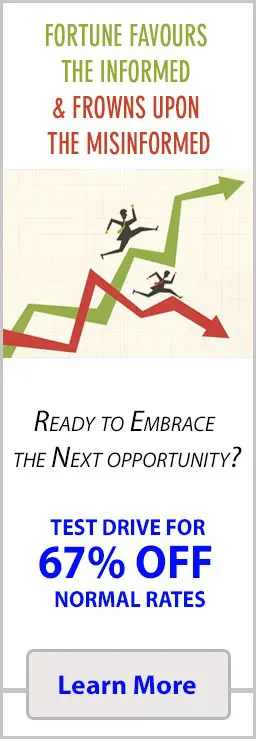Popular Sentiment: The Ultimate Tool to Outsmart the Masses and Profit
April 3, 2025
The Psychology of the Market: How to Profit from Popular Sentiment
In the merciless arena of the markets, sentiment isn’t just a background hum—it’s the battle cry of every trader, investor, and speculator. Forget everything you’ve been spoon-fed about market trends and mechanical systems. It’s time to rip apart the herd mentality, expose its weaknesses, and harness its raw energy for profit. This isn’t about playing by the book; it’s about rewriting the rules, shattering conventional wisdom, and learning how to profit where others blindly follow.
The Market Is Alive: Understanding Its Emotional Core
The market is a living organism—restless, unpredictable, and driven by human emotion. At its core lies behavioral psychology, a field that dissects the raw impulses, cognitive biases, and overconfidence that drive the crowd. When you master this territory, you no longer react to the market; you anticipate, counter, and ultimately dominate.
The herd doesn’t choose profit; it chases the next wave of optimism or drowns in panic. Traders who understand these underlying impulses hold the real advantage. It’s about recognizing when the mass hysteria is a mirage, when the collective mood sways irrationally, and when that very emotion is your signal to strike. By integrating refined technical tools like Volume Spread Analysis (VSA) and Market Profile, you can objectively assess the underlying market sentiment and distinguish genuine momentum from manufactured frenzy.
Volume Spread Analysis: The Market’s Hidden Language
VSA cuts through the noise by examining the relationship between volume, price, and spread. It’s a brutal, unyielding tool that reveals the hidden intentions of the market. When the volume surges in tandem with a narrow price range, the market whispers secrets—a sign of accumulation before a breakout. Conversely, a spike in volume with a wide price spread can signal distribution, the final exhalation before a downturn. The key takeaway? When the crowd’s passion meets concrete volume signals, that’s where the profit lurks.
Meanwhile, the Market Profile provides a dynamic blueprint of price distribution over time. It’s not merely about pinpointing a support or resistance level; it’s about mapping the territory where the market has spent its time, its emotional residue left behind. Think of it as reading the battlefield after a skirmish—the clusters and gaps are clues to where the real action is brewing. When a price begins to drift away from its established profile, it’s a red flag: the herd is repositioning, and those with the discipline to track these changes can preempt the ensuing surge or collapse.
The Fusion of Psychology and Technical Mastery
The fusion of behavioral insight and these two technical approaches transforms raw market data into a tactical advantage. It’s not enough to see a surge in volume or an anomalous price spread; you must understand the psychology behind it. When fear grips the masses, irrational exuberance or panic selling becomes rampant. Cognitive biases, such as overconfidence or loss aversion, dominate decision-making. The unsuspecting trader, intoxicated by herd behavior, will likely hold on too long, ignore contrarian signals, or jump on a bandwagon with a sinking engine.
For instance, consider a scenario where the market is teetering on the edge of a breakout. The price hesitates within a narrow range while volume surges—a textbook VSA scenario for accumulation. Meanwhile, the Market Profile shows a well-established value area, indicating that many market participants have a vested interest in that price level. The herd might be blissfully unaware that professional players are silently stacking positions behind this veneer of calm. They’re exploiting the cognitive bias of narrative fallacy: the comforting story that the market is stable, that nothing dramatic is about to happen. When the breakout finally occurs, it isn’t the irrational exuberance of the crowd that fuels the move; it’s the calculated, disciplined reaction of those who recognized the signs early. Remember: It’s not the noise of the herd but the silence of the informed that leads to massive gains.
Overconfidence: The Herd’s Achilles’ Heel
In the world of trading, overconfidence is a lethal weapon in the wrong hands. The herd, bolstered by inflated self-assurance, often overcommits, setting up scenarios where emotions override logic. When a bubble forms, it’s not just inflated prices that burst; it’s the fragile ego of the collective that shatters. Overconfidence blinds the average trader to the subtle cues that VSA and Market Profile meticulously outline. They’re caught up in the illusion of control, unable to see that the factors that fueled their earlier gains signal an impending reversal. Here’s the brutal truth: Recognizing when the crowd’s overconfidence has reached its zenith signals to step back, recalibrate, or even take a contrarian position.
Loss aversion compounds this problem. The fear of losing more than the thrill of potential gain makes traders cling to losing positions for far too long. In a scenario where the Market Profile begins to show a clear divergence from the price action, it’s a stark reminder that the narrative the herd clings to is unraveling. Professional players understand that the market doesn’t owe you a continuation of the trend—it’s an impartial force responding only to the interplay of supply, demand, and emotion.
The Art of Trading: Precision Over Emotion
The art of trading, at its core, is about balance. It’s the interplay between aggression and caution, the measured response to chaos, and the cold calculation of risk versus reward. The informed trader uses psychology as a scalpel, dissecting the herd’s impulsive moves, and pairs it with the blunt instrument of technical analysis to enforce discipline. It’s about knowing when to strike and hold back—recognizing that power is not in constant action, but in calculated movement. Every successful move in the market is a product of timing, precision, and the ability to see through the smokescreen of popular sentiment.
While most traders flounder in the chaos of raw emotion, you can rise above. When you can identify the quiet signals of volume accumulation and the subtle shifts in market distribution, you become a force that the herd can neither predict nor control. The market is not a static entity—it’s a dynamic interplay of fear, greed, and calculated decision-making. By integrating a deep understanding of behavioral tendencies with the hard data of VSA and Market Profile, you effectively rewrite the rules of engagement.
Final Thoughts: Popular Sentiment & Trading Beyond the Noise
To sum it up, the battlefield of the markets is not for the faint-hearted. It demands a mindset that blends the razor-sharp insights of behavioral psychology with the unyielding clarity of advanced technical tools. The herd is both your enemy and your guide—its collective impulse creates opportunities that, when properly interpreted, can yield massive profits. It’s a world where the subtle signals of volume accumulation and price distribution can mean the difference between a winning move and a costly mistake.
There are no shortcuts in this arena. Each move must be calculated, and each signal must be dissected with cold precision. The emotional biases that drive the masses are your greatest indicators—understand, track, and exploit them. That is how you take control of the market instead of being controlled by it.
Where Insight Meets Impact











